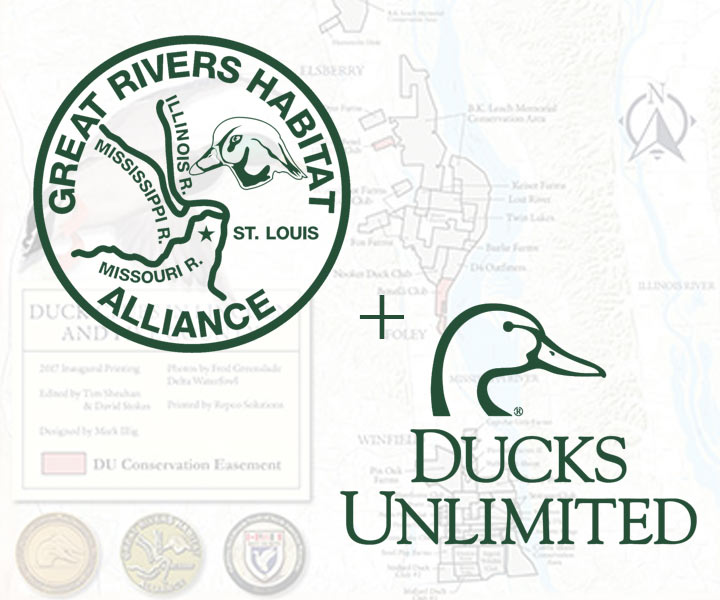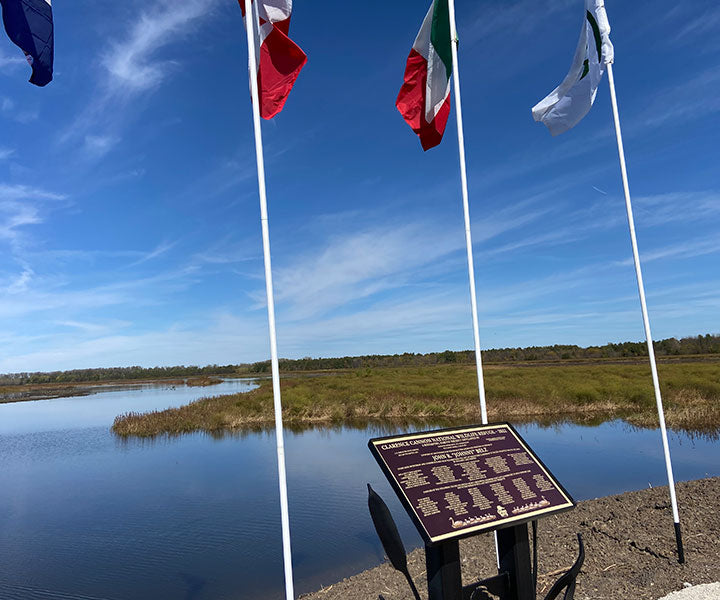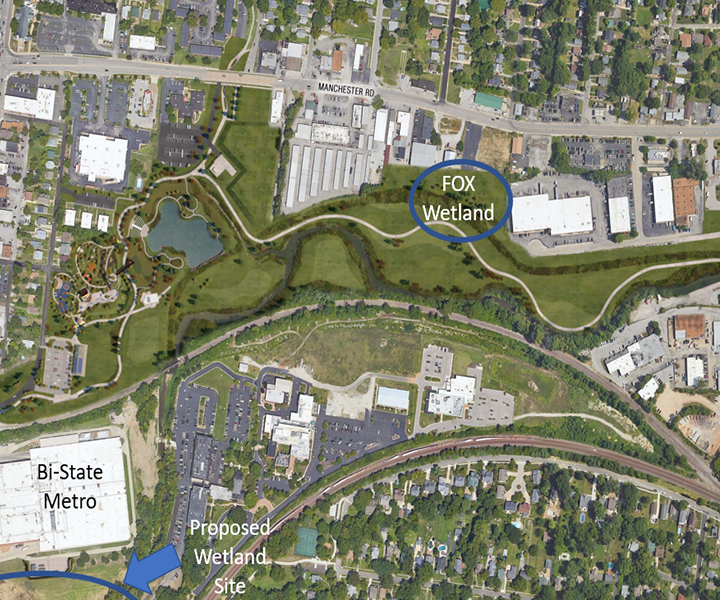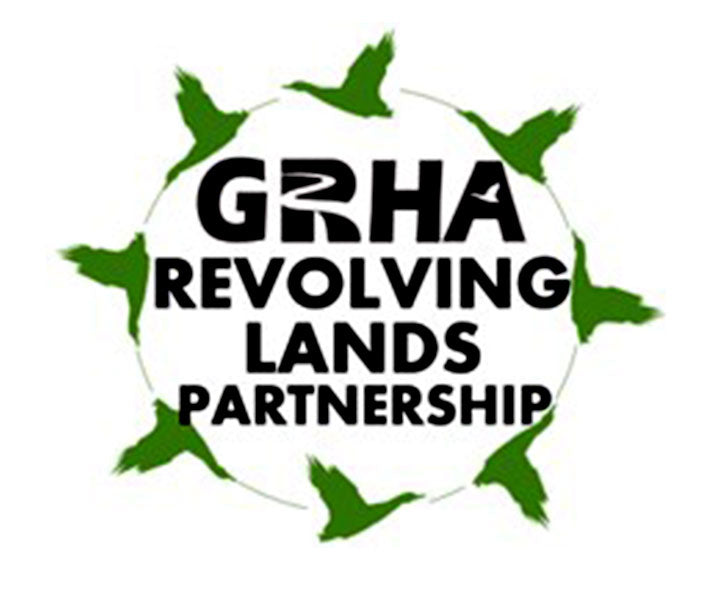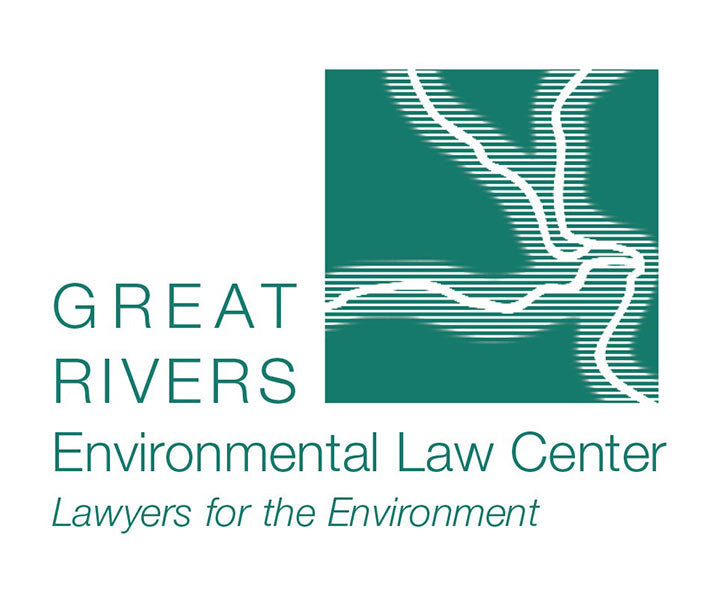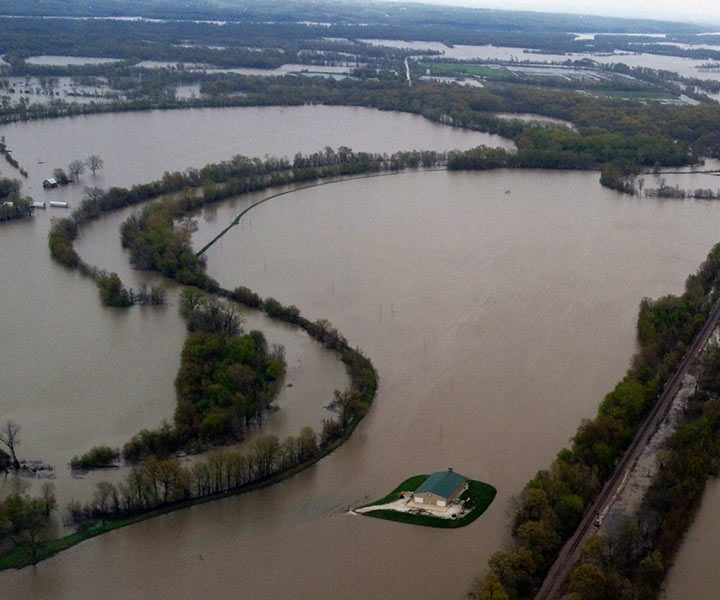Price :
QTY :
CART TOTALS :
There are items
in your cart
CART TOTALS :
Your shopping bag is empty
Go to the shop
Great Rivers Habitat Alliance holds the 181-acre Foster/Rollins Floodplain Conservation and Education Area property in St. Louis County and holds and additional 7 properties totaling approximately 2.01 acres for a total of 183.01 acres (3 In St. Charles County, 4 in Lincoln County). See Map of all GRHA Properties.
In 2022, Great Rivers Habitat Alliance embarked on an exciting new venture to protect more than 181 acres of floodplain habitat along the Mississippi River and create what we will call the GRHA Foster-Rollins Floodplain Conservation and Education Area. The property is just south of St. Louis and adjoining Cliff Cave County Park and Marions Place. The property is now the largest currently owned by GRHA. That journey took another step when GRHA closed on the property on April 11, 2024. Future steps will include restoration and management. The area will be open to the public and managed to enhance the adjacent public parks viewing opportunities. An existing multi-use recreational trail on the property makes it highly accessible.
The properties owners, Tom Rollins and George Foster approached GRHA with the idea of conserving the property by selling the property to GRHA at a significant savings. Great Rivers Habitat Alliance proposed the creation of a conservation and educational showcase on the 181-acres of floodplain designed to meet the mission of GRHA and celebrate the legacy of the former owners.
This site possesses aesthetic views of the Mississippi River, the bluffs and a biologically diverse floodplain environment adjacent to and within the Cliff Cave Natural Heritage County Park. The Foster-Rollins Floodplain Conservation and Education Area will connect people to the Mississippi River and emphasize Americas big river floodplains. The property will highlight river floodplain best use practices including wetland, grassland and bottomland hardwood habitat restoration, agriculture, recreation and natural wildlife habitat management.
GRHA will maintain agricultural operations while restoring some existing agricultural to wetland habitat and improve existing natural habitats for wildlife through prairie and bottomland hardwood restoration, as well as improved management practices. These lands will create an outdoor oasis for people and wildlife demonstrating how green spaces are important to quality of life.
Along with habitat improvements, future plans are to develop education/outreach kiosks, viewing/camera blinds, and use the property for environmental programing, including opportunities such as use as an outdoor classroom by local and state education institutions.
The project would not have been possible without the generous support of the Mysun Charitable Trust, Robert J. Trulaske Family Foundation and The Conservation Fund.
You can help support this effort by making donations on-line.
Stay tuned for more information as this exciting property continues to develop!

GRHA believes that floodplains best uses include natural habitat, recreational properties and agriculture. These land uses are best suited for grounds that flood.
A floodplain is a generally flat area of land next to a river or stream. It stretches from the banks of the river to the outer edges of the valley. A floodplain consists of two parts. The first is the main channel of the river itself, called the floodway. Beyond the floodway is the flood fringe. The flood fringe extends from the outer banks of the floodway to the bluff lines of a river valley. Floodplains are formed mainly of river sediments and subject to flooding.
Floodplains have several benefits to a functioning natural system. Here are some of the good uses of floodplains:
Wetlands are areas where water covers the soil, or is present either at or near the surface of the soil all year or for varying periods of time during the year, including during the growing season. Water saturation (hydrology) largely determines how the soil develops and the types of plant and animal communities living in and on the soil. Wetlands may support both aquatic and terrestrial species. The prolonged presence of water creates conditions that favor the growth of specially adapted plants (hydrophytes) and promote the development of characteristic wetland (hydric) soils.
Wetlands help us improve the quality of our watersheds through filtering and nutrient uptake. Their role in the natural world is to capture and hold water, allowing sediments and pollutants to filter out or be removed by plant life. Healthy wetlands can remove significant amounts of pollutants, excess nutrients, and sediment.
Wetlands are capable of holding large amounts of floodwater during storm events and provide ideal habitat for plants that sequester excess carbon, nitrogen and phosphorous (three major water and air pollutants).
Species You might see on the property.
In 2022, Great Rivers Habitat Alliance embarked on an exciting new venture to protect more than 181 acres of floodplain habitat along the Mississippi River and create what we will call the GRHA Foster-Rollins Floodplain Conservation and Education Area. The property is just south of St. Louis and adjoining Cliff Cave County Park and Marions Place. The property is now the largest currently owned by GRHA. That journey took another step when GRHA closed on the property on April 11, 2024.
GRHA Partners with Ducks Unlimited in many ways including the DU Conservation Easement Program. GRHA partners in the Conservation Easement Program increase the uptake of private conservation easements by providing landowners financial support during the due diligence process and by promoting the overall program. These easements preserve the land in perpetuity, with a goal of eventually assembling enough parcels to effectively create a wall of protection against commercial development in the Confluence.
GRHA partners with Ducks Unlimited and other partners on projects addressing wetland loss and flooding within the Confluence through DU’s Big Rivers Initiative -Missouri. The Confluence of the Mississippi, Illinois, and Missouri Rivers is North America’s greatest floodplain forming a unique wetland system known as the Confluence Floodplain. This region carries waters from over half of the United States landscape and serves vital ecological functions such as storage and purification of floodwaters.
The Brentwood Bound Plan is a comprehensive solution to overcome flooding and public safety challenges presented by the Deer Creek channel and to improve the Manchester Road corridor within the City of Brentwood. Great Rivers Habitat Alliance with support of the Fox Family Foundation is proud to partner with the City of Brentwood in their Brentwood Bound Plan and Deer Creek Flood Mitigation project.
GRHA continues its strategy of partnerships to protect the Confluence through programs such as the Missouri Agriculture Wetlands Initiative, which delivers coordinated private land conservation in the Confluence. GRHA is proud to join the Missouri Agricultural Wetland Initiative (MAWI) Partnership and will support the partnership through an annual gift restricted to projects in the 3 county areas of Lincoln, Pike and St. Charles.
Great Rivers Habitat Alliance has made a commitment to partner with Wisconsin Ducks Unlimited and other partners to support Wisconsin’s Big Rivers Initiative. The Wisconsin Big Rivers Initiative focuses on the western two-thirds of the state that drains into the Mississippi River, down to the Confluence and eventually the Gulf of Mexico.
The Great Rivers Habitat Alliance is proposing the creation of a placed-based partnership designed to increase focus and achieve a shared vision of protecting the Confluence floodplain called the GRHA Revolving Lands Partnership.
Great Rivers Environmental Law Center partners with Great Rivers Habitat Alliance by providing free legal services to protect the environment and public health. We work together through the courts and administrative agencies to safeguard the environment by enforcing environmental laws, especially air and water pollution laws and laws intended to protect wetlands, floodplains, open space, and endangered species.
To address flooding, GRHA is working with local leadership to tackle the issue of floodplain rise and the filling of the floodplain and develop a regional approach for managing flood losses while protecting and restoring benefits of floodplains. We look to grow public awareness of the importance of the Confluence and provide a voice for landowners, agriculture, the duck clubs and Confluence hunters. GRHA will use policy and litigation to support our mission to directly combat the commercial development of the 100-year Confluence flood plain.
"It is vital to protect the critical migration habitat of Raccoon Ranch in perpetuity - especially as it relates to the abundant spring migration habitat on the property,” explained Charlie Hager, President and Chief Operating Officer for C. Hager & Sons Hinge Manufacturing Company. “The more of us in the Confluence who take the step to protect the wetland values of our property with a conservation easement the more we can insure that waterfowl will use the Confluence in the future.”
Garth Fort, then Dardenne Club member and chairman of the club's easement committee said, “The 22-member club voted unanimously to protect Dardenne's natural wetlands with a conservation easement, and we all feel really good in doing so. It's the most important action the club has ever taken.”
“We’re all stewards of the land. It’s our obligation and responsibility to preserve and protect this historical migration route, and that will require all ducks clubs, large and small, working together to conserve the wetland values of the Confluence. Maybe in 200 years someone will say, ‘These folks sure had some foresight!’”
"A donated easement was the best way to guarantee the long-term sustainability of the wetland habitat on the property."

